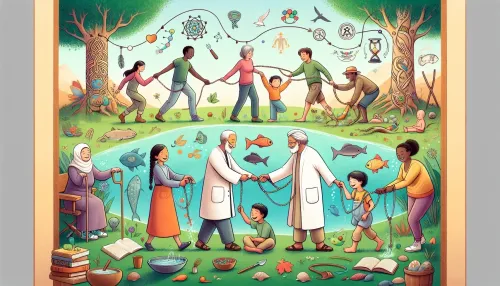Uncovering the Efficacy of Art Therapy in Autism Support Groups

Art therapy is an increasingly popular and impactful form of therapy for individuals on the autism spectrum. We'll explore the future outlook of art therapy in autism support groups, its impact on skill development, engagement, and holistic well-being, as well as qualitative outcomes that matter.
Art has always been a form of expression and communication. For autistic children, who may face challenges in verbal expression and social interaction, art provides a non-verbal platform for self-expression. In the future, we anticipate a deeper understanding of how art can serve as a powerful tool for individuals with autism to communicate their emotions, thoughts, and experiences. Acknowledging the potential of art as a medium for fostering self-expression and fostering emotional growth in autistic children.
Painting a Brighter Future: Art as Expression
Sculpting with clay has emerged as an effective therapeutic intervention for autistic children. The tactile nature of working with clay engages multiple senses, offering a novel way for children to explore their creativity while promoting sensory integration. As we look ahead, the adoption and evolution of clay sculpting within art therapy programs are poised to play a more significant role in enhancing the confidence and tactile experiences of autistic children.
In an increasingly digital world, incorporating digital art into therapy programs for autistic children opens new possibilities for engagement and skill development. Digital art not only aligns with the interests of many young individuals but also provides an avenue to develop technical skills and potentially create new career paths. We anticipate that HorizonsMind will delve deeper into the realm of digital art as an innovative means to enhance the creativity and technological literacy of autistic children.
The Therapeutic Touch of Clay: Building Confidence
Exhibiting artworks created by autistic individuals in gallery showcases not only celebrates their talents but also fosters community awareness and acceptance. Looking forward, HorizonsMind envisions an increased focus on creating platforms for autistic artists to exhibit their work, thereby boosting their self-esteem and showcasing their unique perspectives to the broader community.
Related Article: Unveiling the Spectrum of Therapies: A Newcomers Guide to Supporting Autistic Children
Digital Art: Enhancing Engagement and Skills
Intermodal expressive arts, encompassing a combination of different artistic mediums such as music, painting, and movement, holds great promise in promoting holistic development among autistic children. This innovative approach acknowledges that individuals may have diverse strengths across various artistic domains. It,s essential to recognize the potential of intermodal expressive arts to create enriching experiences that cater to a spectrum of abilities and preferences among autistic children.
Gallery Showcases: Boosting Self-Esteem and Awareness
Exploring real-life success stories where art therapy has significantly impacted the lives of autistic children is instrumental in understanding the efficacy and future potential of this therapeutic approach. Such case studies are pivotal in demonstrating the transformative power of art therapy within autism support groups. By highlighting these stories through curated content on HorizonsMind, we inspire hope and ignite conversations around the tangible benefits of incorporating art therapy into support programs.
As we move forward, it’s imperative to shift focus from solely quantifiable metrics to qualitative outcomes that truly matter in assessing the effectiveness of art therapy in autism support groups. Qualitative assessments encompass factors such as emotional expression, confidence building, social engagement, and overall well-being – crucial elements that go beyond conventional measures of success. As we recognize the significance of capturing these qualitative outcomes through its commitment to advancing discussions on impactful therapeutic interventions for autistic children.
Related Article: Behavioral Management Best Practices for Autistic Children
Intermodal Expressive Arts: A Holistic Approach
In conclusion, the horizon for art therapy in autism support groups is brimming with potential. The evolution and deeper integration of various art forms within therapy programs hold promise for nurturing creativity, enhancing communication, and promoting holistic well-being among autistic children.
Frequently Asked Questions
Art therapy offers numerous benefits for autistic children, including enhanced self-expression, improved emotional communication, and increased social engagement. By providing a non-verbal platform, it helps them articulate their feelings and thoughts creatively, fostering confidence and promoting holistic well-being.
Digital art plays a significant role in skill development for autistic children by aligning with their interests and enhancing technical skills. It opens new avenues for creativity and may even lead to potential career paths, making it a valuable addition to therapeutic programs.
Evaluating qualitative outcomes in art therapy is crucial as it focuses on emotional expression, confidence building, and overall well-being rather than just quantifiable metrics. This approach captures the true impact of therapy on individuals, ensuring that therapeutic interventions are effective and meaningful.
Check Out These Related Articles

Unlocking Autistic Potential: Advances in Cognitive Development Therapies

Innovative Legacy: Preserving Time-Honored Practices While Embracing Technological Advancements

Honoring Traditions: Integrating Time-Honored Wisdom into Modern Autism Care
